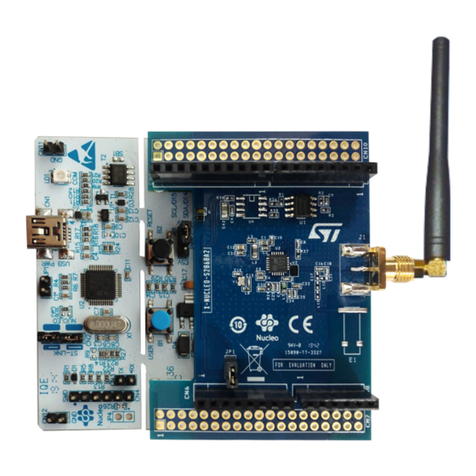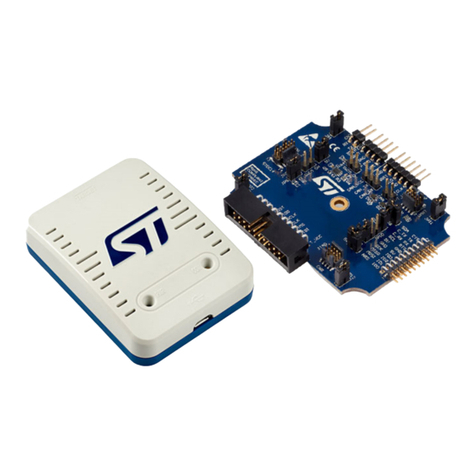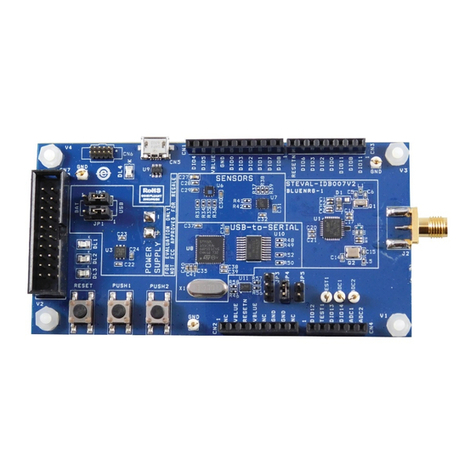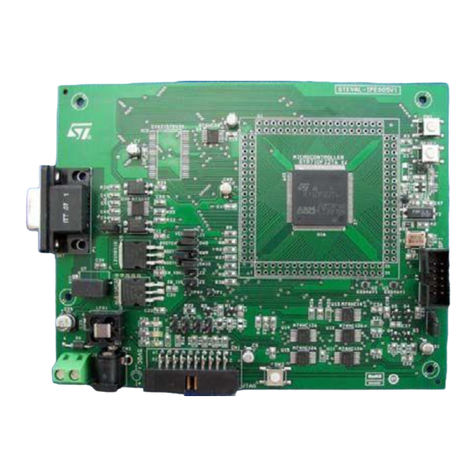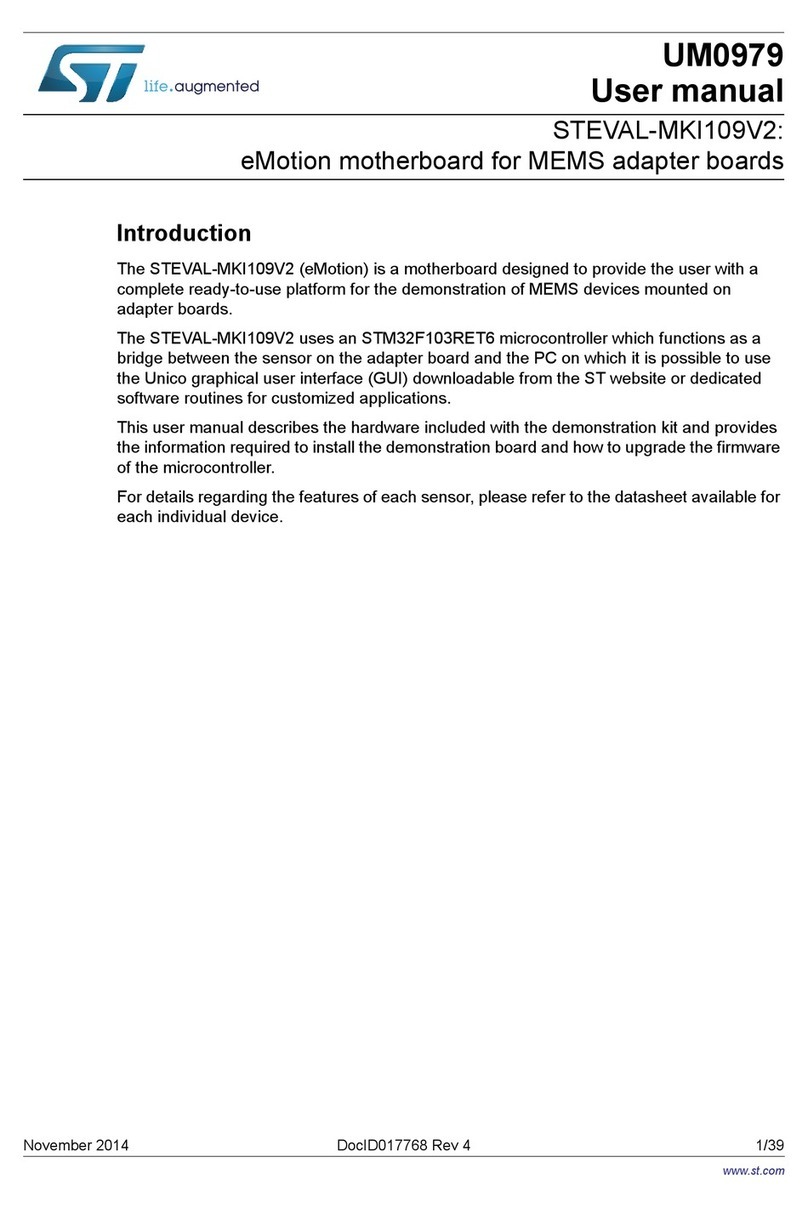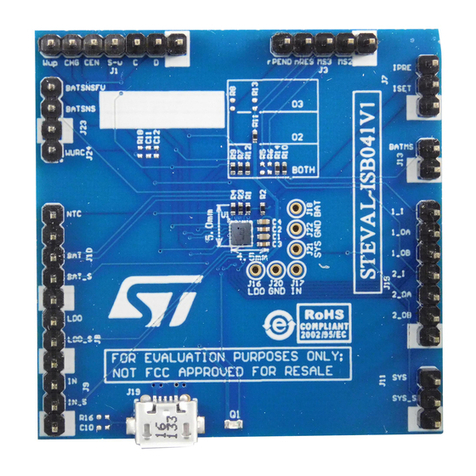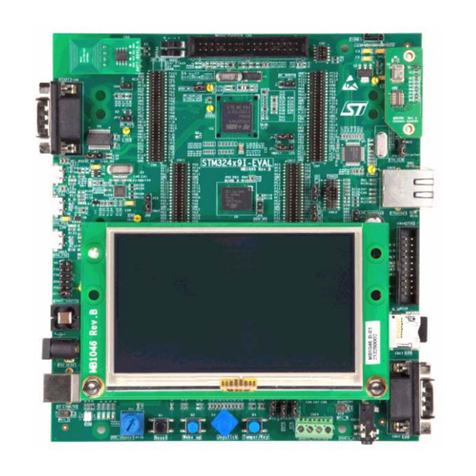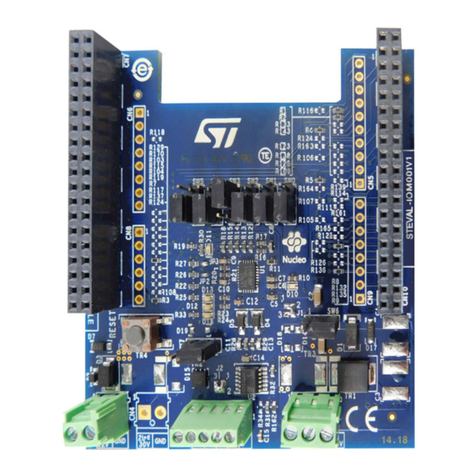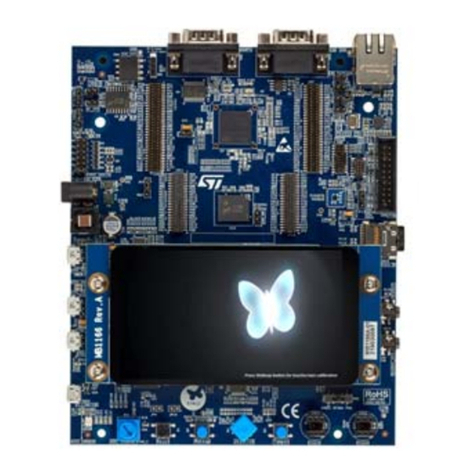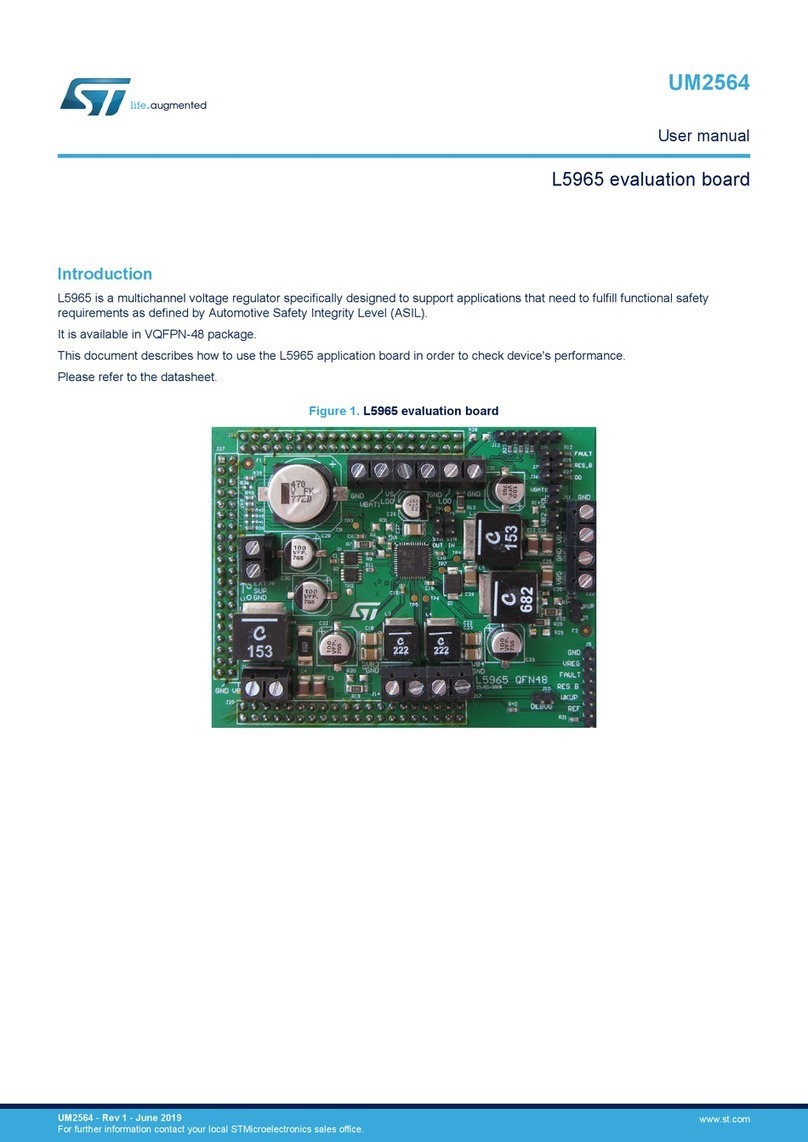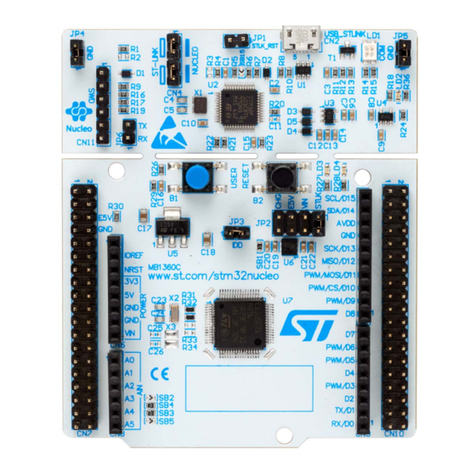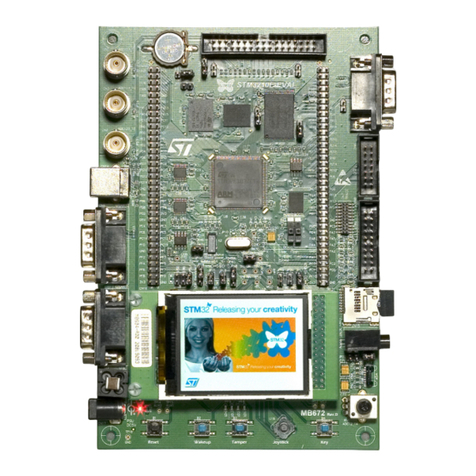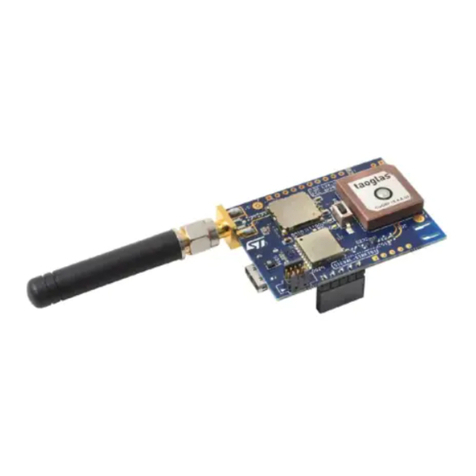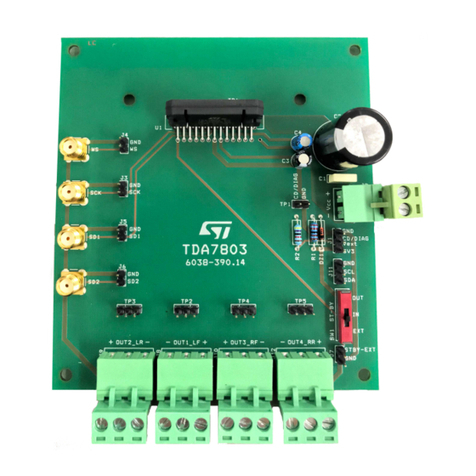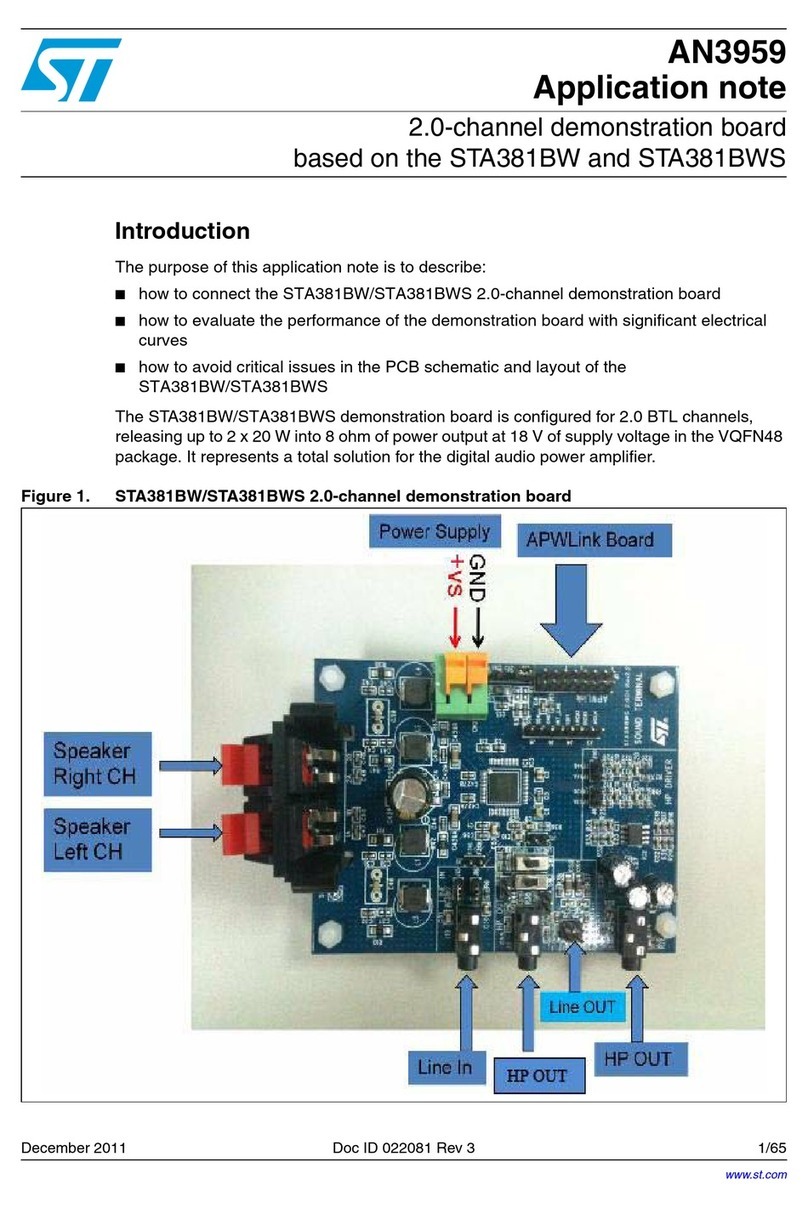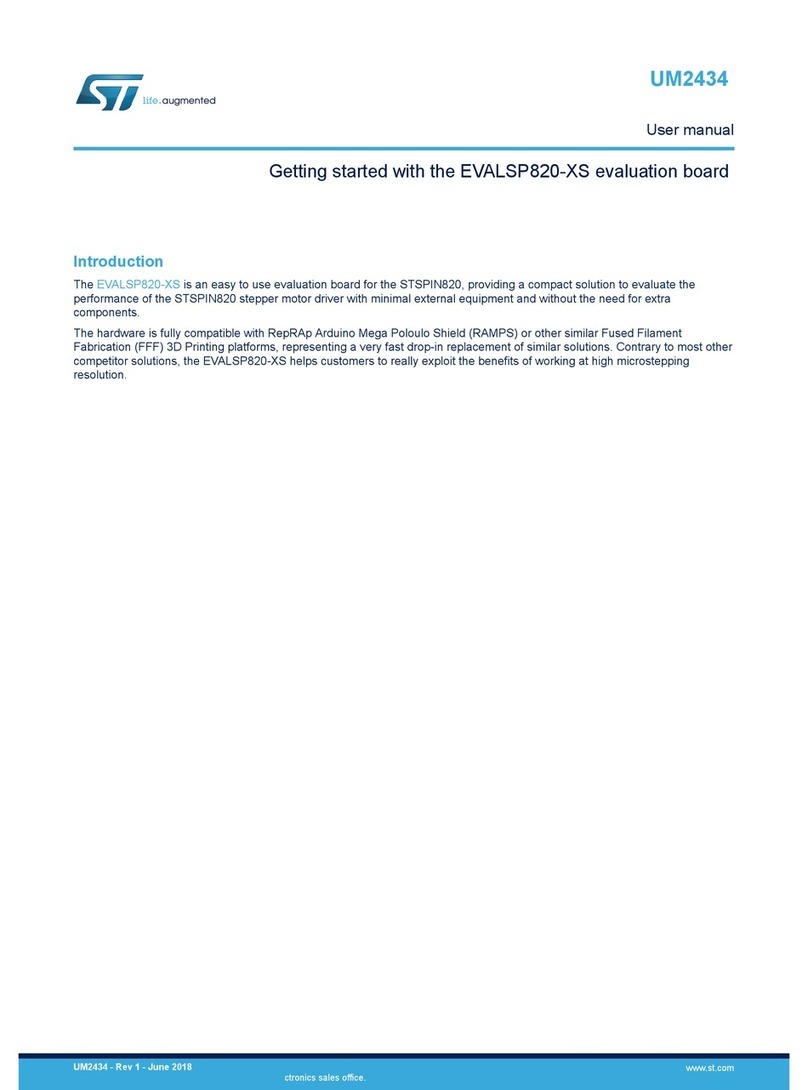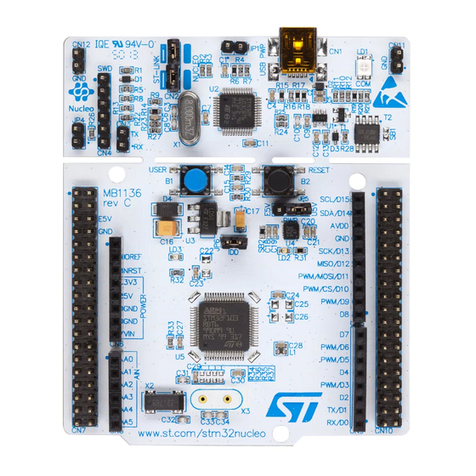
Introduction
The STM32H735G-DK Discovery kit is designed as a complete demonstration and development platform for STMicroelectronics
Arm® Cortex®-M7 core-based STM32H735IG microcontroller. This microcontroller features five I²C, six SPIs with four
multiplexed full-duplex I2S interfaces, five USARTs, five UARTs and one ULP UART, one TT/CAN FD, two CAN FDs, two 16-bit
ADCs and one 12-bit ADC, two 12-bit DACs, two SAIs, two Octo-SPI interfaces with OTFDEC crypto, FMC interface, two
SDMMC controllers, two analog comparators, one SPDIF-RX, DFSDM (8 channels / 4 filters), one USB OTG HS and one USB
OTG FS, Ethernet MAC, DCMI interface, TFT LCD controller interface, JTAG and SWD for debugging support.
The STM32H735G-DK Discovery kit offers everything required by the user to get started quickly and develop applications easily.
The hardware features on the board help to evaluate the following peripherals: USB OTG FS, 10/100-Mbit Ethernet, microSD™,
USART, SAI audio codec stereo with two audio jacks for input/output, ST MEMS digital microphone, 128-Mbit HyperRAM™
memory, 512-Mbit Octo-SPI NOR Flash memory, CAN FD, 20-pin microphone MEMS connector with DFSDM interface, 4.3-inch
RGB TFT-LCD display with capacitive touch panel. The ARDUINO® Uno V3 compatible connectors, Pmod™, and STMod+
connectors allow easy connection of extension shields or daughterboard for specific applications.
The integrated STLINK-V3E provides an embedded in-circuit debugger and programmer for the STM32 MCU.
Figure 1. STM32H735G-DK Discovery kit (top view) Figure 2. STM32H735G-DK Discovery kit (bottom view)
Pictures are not contractual.
Discovery kit with STM32H735IG MCU
UM2679
User manual
UM2679 - Rev 1 - April 2020
For further information contact your local STMicroelectronics sales office. www.st.com


